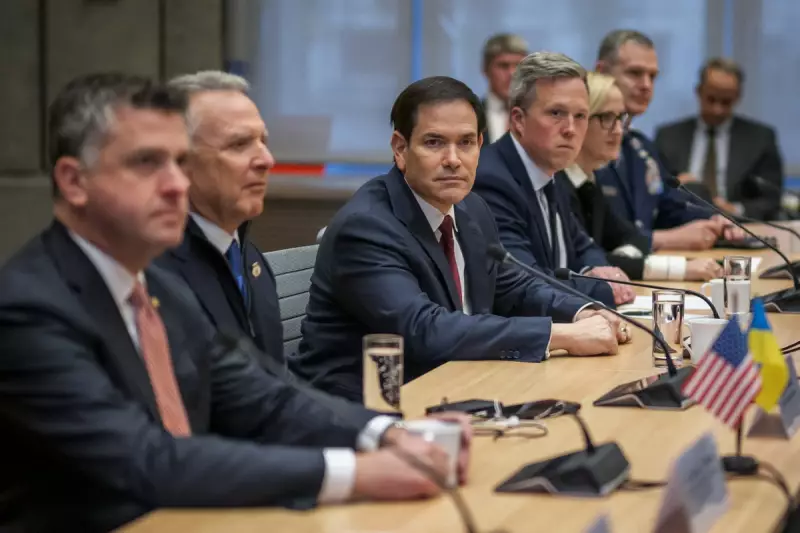
High-stakes negotiations to end the war in Ukraine took a significant turn on Sunday as the United States agreed to make "some changes" to its contentious peace proposal. The development followed intensive talks in Geneva, which both American and Ukrainian diplomats appraised as a success.
Diplomatic Breakthrough in Geneva
US Secretary of State Marco Rubio declared that discussions with Ukrainian officials had been "the most productive and meaningful" of the entire peace process. He confirmed the Trump administration would amend its original plan, seemingly incorporating Ukrainian input, though specific details remained unclear.
The diplomatic progress comes as a provisional deadline set by Donald Trump for a deal by Thursday rapidly approaches. The US president struck a more dismissive tone earlier on Sunday, asserting the conflict would never have occurred under "strong and proper US and Ukrainian LEADERSHIP".
In a notable outburst, Trump accused Kyiv of ingratitude for American efforts to end the war and criticised European nations for continuing to purchase Russian oil.
European Powers Step In With Modified Plan
As diplomats gathered in Switzerland, a counter-proposal drafted by Britain, France, and Germany emerged. This European sketch of an armistice presents terms substantially more favourable to Ukraine, including the concrete security guarantees that Kyiv has long stated are essential for lasting peace.
The 28-point counter-proposal, structurally based on the original US plan but with significant amendments, contains several key differences:
- While NATO would agree not to permanently station troops in Ukraine during peacetime, Ukraine could still join the military alliance, subject to approval from all members.
- Ukraine's standing military would be larger than originally proposed, at up to 800,000 personnel compared to the initial 600,000.
- Elections would be held "as soon as possible" after signing a peace agreement, rather than waiting 100 days.
- The basis for territory swaps is markedly different, with negotiations starting from existing frontlines rather than recognising Crimea, Luhansk, and Donetsk as de facto Russian.
- The proposal states Ukraine should commit to not taking back "occupied sovereign territory" through military means.
- Ukraine would receive financial compensation, including through frozen Russian sovereign assets.
Scrutiny Over Plan's Origins and Concessions
The original US peace plan, aired earlier in the week, continues to face intense scrutiny over its origins and apparent concessions to hardline Russian demands. The proposal emerged just days after the US sanctioned Russian energy companies, while the Kremlin reiterated its maximalist designs on Ukraine without apparent compromise.
Marco Rubio was forced to clarify on Saturday that the mediating Trump administration actually authored the plan after US lawmakers suggested it appeared to be a Russian initiative. Senator Angus King revealed Rubio had told senators the plan was not the administration's position but "essentially the wish-list of the Russians".
The plan concedes many Russian demands that Ukrainian President Volodymyr Zelensky has categorically rejected on dozens of occasions, including surrendering significant territory.
Sources indicate growing concern among US officials and lawmakers about a meeting in Miami last month between members of the Trump administration and sanctioned Russian envoy Kirill Dmitriev. People familiar with the situation said this conversation produced the proposal calling for heavy concessions from Ukraine, taking US officials by surprise.
Rubio has insisted the plan was authored by the US, drawing on "input from the Russian side" while also considering "previous and ongoing input from Ukraine".
European Commission President Ursula von der Leyen echoed on Sunday that Ukraine's borders cannot be changed by force, its army cannot be left vulnerable to attack, and that the European Union must have a central role in any peace deal for Ukraine.





